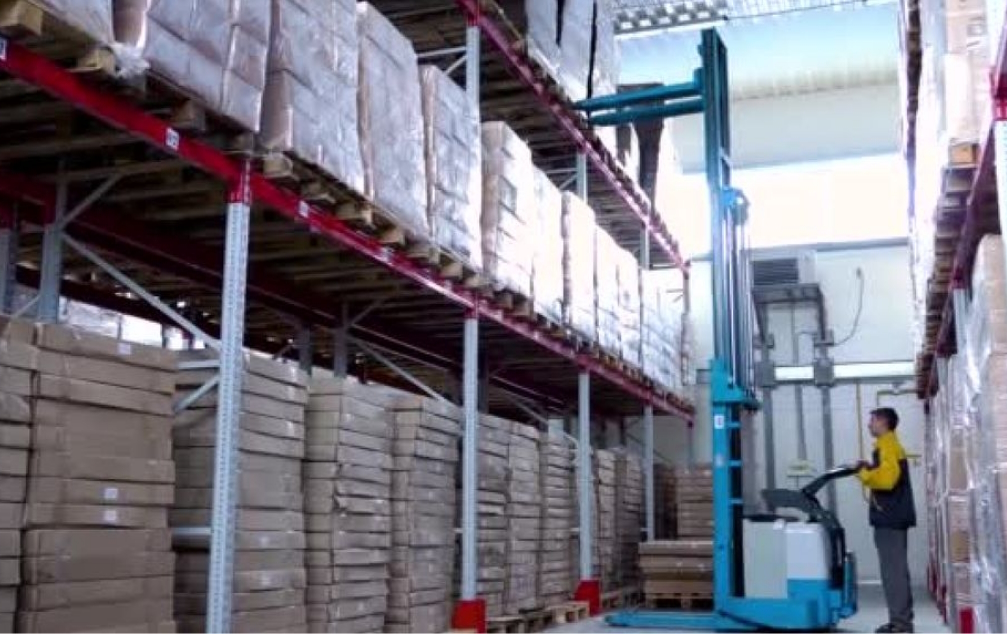Utilize Pallet Racking Systems to Achieve Optimal Storage
- Written by NewsServices.com

Pallet racking is a type of storage system used to store and organize materials in warehouses. It consists of frames, beams, and shelves that are arranged to create a grid-like structure for storing pallets or other material-handling equipment. Pallet racking systems provide an efficient way to store materials in high-density environments and can be customized to fit any space. Pallet racking is commonly used in factories, warehouses, retail stores, and other industrial facilities where efficient storage is necessary. With the right configuration, pallet racking systems can maximize space utilization while providing easy access for loading and unloading goods.
Types of Pallet Racking Systems
Pallet racking systems are essential components of any warehouse or storage facility. Depending on the size and purpose of their business, companies may need to invest in different types of pallet racking systems. Warehouse pallet racking inspections are integral to ensuring a safe working environment. Here is a guide to five popular pallet racking systems:
Drive-in/Drive-Thru Rack: These racks are used when space efficiency is a priority. They use a last-in, first-out (LIFO) system that allows forklifts to drive directly into the rack and retrieve items from the back without having to move other items out of the way. This is useful for businesses with high inventory volume and low product turnover rates.
Push Back Rack: These racks work on a first-in, first-out (FIFO) system that allows for multiple levels of storage within one rack. When an item is retrieved from the back row, all subsequent rows are pushed backward making it easier for workers to access stored products without having to move items out of the way constantly. This type of rack also helps speed up order-picking processes as orders can be filled quickly and efficiently with minimal movement around the warehouse or storage area needed by workers.
Factors to Consider when Choosing a Pallet Racking System
When it comes to keeping goods and materials organized, pallet racking systems offer a great solution. But with so many different options on the market, how do you know which one is best for your needs? Here are some key factors to consider when choosing a pallet racking system.
Space Requirements: The most important factor to consider when selecting a pallet racking system is the available space. Measure the area you have available and then choose a system that will fit comfortably within those dimensions. Make sure you also measure doorways, pathways, and other areas where items may need to be moved through in order to ensure easy access.
Weight Capacity & Load Requirements: It’s essential that your chosen pallet racking system is capable of handling the weight of all items stored on it. Be sure to check the manufacturer’s specifications carefully before purchasing — this includes both static (unmoving) and dynamic (moving) load capacities as well as any specific requirements for particular types of goods or packaging materials if applicable.
Installation and Maintenance Guidelines for Pallet Racking Systems
Pallet racking systems are an essential part of warehouses and other industrial facilities. These systems provide the necessary support to store products safely and effectively. However, it is important to ensure proper installation and maintenance of pallet racking systems in order to maximize their efficiency and reduce potential safety hazards. This article provides an overview of the installation process, proper safety procedures, as well as regular inspections and maintenance for pallet racking systems.
Installation Process Overview
It is essential that pallet racking systems are installed properly so that they can function optimally. Before installing a system, it is important to plan out the layout in order to ensure maximum efficiency. It is also important to make sure that all components are available before starting the installation process. The entire system should then be assembled according to manufacturer instructions with appropriate tools such as wrenches, screwdrivers, etc. while following standard safety protocols such as wearing protective gear like gloves and goggles when handling heavy components or working at heights on scaffolding or ladders where necessary. After assembly, each component should be double-checked for accuracy by a qualified professional before use in order for the system to work correctly without any issues or potential risks down the line.
Conclusion
Pallet racking systems are a great way to maximize the storage space in warehouses and other commercial buildings. They provide an efficient and reliable way to store goods, improve warehouse organization, and optimize inventory management. With the right design, pallet racking systems can be tailored to the specific needs of any business.








